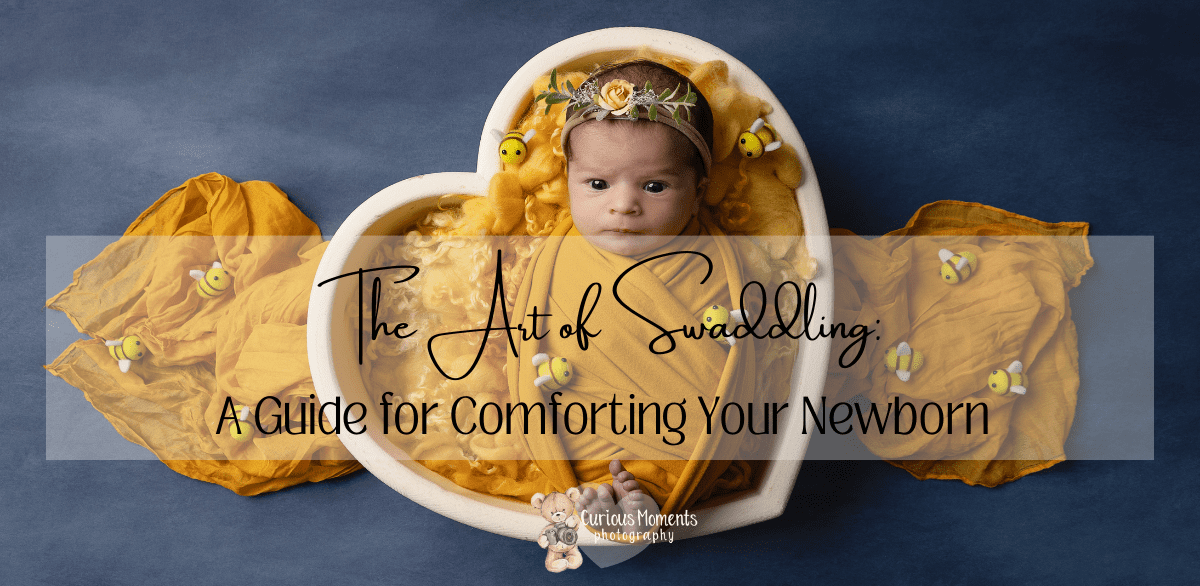
Baby Skin Problems: 5 Common Things You May Not Know About
May 20, 2022
Morning Sickness tips: What To Expect & How To Handle It!
January 10, 2023[vc_row][vc_column][vc_column_text css=”.vc_custom_1660334777565{padding-bottom: 0px !important;}”]
The Colourful Facts About Your Baby’s Poop! What’s Normal? And What’s Not?!
[/vc_column_text][vc_column_text]If you’re new to this whole baby thing, the colours, textures, and frequency of baby poop can be pretty confusing. The nappy is one of the most essential (and confusing) items in a baby’s life! But here’s a secret: You’re going to spend a lot of time looking at it and cleaning it up! So it’s important to know what’s normal and what isn’t. Consider this your crash course!
You’ll notice something strange when you first start peeling off those newborn nappies – it looks like sticky, greenish-black tar. This is your baby’s first bowel movement, known as meconium. Meconium is a mixture of amniotic fluid, bile, and secretions from the intestinal glands. Most babies wait until after they’re born to pass meconium (though it can happen before). It will usually stick around for hours, and a few days later, the real stuff will arrive.[/vc_column_text][/vc_column][/vc_row][vc_row full_width=”stretch_row”][vc_column]
The colour of baby poop can vary a lot, so it’s easy to be surprised by a sudden change.
It’s crucial to know what different colours mean, as some can indicate a problem.
Here’s a breakdown of the rainbow of baby poop colours and what they imply…
[/vc_column_text][spacer][/vc_column][/vc_row][vc_row full_width=”stretch_row”][vc_column][vc_column_text]
Normal Ranges of Baby Poop Colours:
1. Black
Although black poop may seem like a sign of illness, it is actually quite common during the first few days after a baby is born. The colour can vary, from dark green to black, which is why many people compare it to motor oil. If black poop persists for more than a few days or appears later on in infancy, the cause may be due to diet and could be the result of consuming grape juice, liquorice, or even Oreo cookies.
If your child hasn’t had any black foods, there are a few possible explanations such as medicines like iron supplements or bismuth.
If none of the above apply, black, tar-like poop occurring after three months could indicate bleeding in the stomach. It’s a condition called melena, which causes bleeding in the digestive tract.
You won’t see bright red blood in the stool. Instead, the acids in your baby’s stomach turn the blood into a sticky, black substance, giving the stool a tar-like appearance. Contact your doctor if you discover this.
2. Green Poop
If you see green in your stool, it’s probably nothing to worry about. Dark green stools can be easily mistaken for black, especially in dim lighting. If you’re unsure, put some of the stool on white paper. If it’s truly green, you’ll see the colour.
Most of the time, dark green poop is caused by bile. But sometimes green vegetables like spinach can also cause this colour.
Babies with diarrhoea may also have green poop. This is because their digestive system is so fast that the food doesn’t have time to change colour. Sometimes medicine can also cause green stool, but if you’re concerned, always talk to your doctor.[/vc_column_text][/vc_column][/vc_row][vc_row full_width=”stretch_row”][vc_column width=”1/3″][/vc_column][vc_column width=”1/3″][vc_single_image image=”16920″ img_size=”full” alignment=”center”][/vc_column][vc_column width=”1/3″][/vc_column][/vc_row][vc_row full_width=”stretch_row” css=”.vc_custom_1647463433276{background-color: #005766 !important;}”][vc_column][spacer][vc_column_text css=”.vc_custom_1660335985574{padding-top: 20px !important;background-color: #005766 !important;}”]
3. Red
While the colour red may remind parents of blood, it’s important to remember that diet largely impacts the colour of a baby’s stool. Foods like beets, tomato skins or juices, and sweet treats like jelly can all cause a baby’s stool to appear red. Additionally, medicines such as Amoxicillin can also influence the colour of a baby’s stool.
When blood is found in an infant’s stool, it is not always from the baby. A mother’s bleeding nipples from breastfeeding is a common cause of blood-traced stool.
However, sometimes the blood is from bleeding in the lower gastrointestinal tract, which will require a visit to the doctor. Milk protein allergy is the most common cause of intestinal bleeding in infants. Blood and mucous typically appear 2 to 3 weeks of age, and are often associated with excessive crying and discomfort. Poor weight gain occurs in severe cases.
4. Mustard Yellow
When your baby’s stool changes to a mustard yellow colour, it indicates that they are no longer in the meconium phase and are now digesting breast milk or formula. . This colour change is more common in breastfed babies, as formula tends to make the stool browner in tone.
5. Bright Yellow
Bright yellow stool is another standard colour seen after the meconium phase, generally in breastfed babies. However, if you notice that your baby’s stool is much runnier than usual or they seem to be having more blowouts, it could be a sign of diarrhoea. In this case, you should contact your doctor for advice on how to avoid dehydration.[/vc_column_text][spacer][/vc_column][/vc_row][vc_row full_width=”stretch_row”][vc_column][vc_column_text]
6. Orange
When it comes to orange poop, this is usually caused by pigment from food. If your child has a meal that consists of pureed carrots, it is not unusual for them to have this happen. Unless your child is experiencing other symptoms like fever, there should not be a cause for concern.
7. Greenish-tan
Greenish-tan is a colour that is commonly seen in babies who are fed formula and those eating solids. If you are exclusively breastfeeding, you may not see this colour as often, but it is still not a cause for concern if you do.[/vc_column_text][/vc_column][/vc_row][vc_row full_width=”stretch_row” css=”.vc_custom_1647463433276{background-color: #005766 !important;}”][vc_column][spacer][vc_column_text css=”.vc_custom_1660336407414{padding-top: 20px !important;background-color: #005766 !important;}”]
Poo Consistency
Baby poop can also vary greatly in texture and consistency, depending on their diet. For infants who are on an all-liquid diet, soft and squishy poops are to be expected. Breastfed baby poop usually has a yellow, seedy, or curd appearance, while formula poop tends to resemble beat-up flan or pudding, but can also have a seedy appearance. If a baby’s poop is excessively hard, this could be a sign of constipation, whereas if it is overly soft or watery, this could point to diarrhoea.
Formula-fed poop is different from breastfeeding poop. It’s denser in texture and browner in colour — it can be yellow-brown, tan-brown, or greenish-brown. Many compare it to peanut butter.
Formula-fed babies also pass fewer bowel movements, sometimes only every 2 to 3 days, but they’re significantly larger.[/vc_column_text][spacer][/vc_column][/vc_row][vc_row full_width=”stretch_row”][vc_column][vc_column_text]
Baby Poo Warning Signs
Babies’ stools can vary in texture and colour, so it’s important to pay attention to any changes. This can be a clue as to what’s going on in the body and may indicate a problem.[/vc_column_text][/vc_column][/vc_row][vc_row full_width=”stretch_row”][vc_column][vc_single_image image=”16916″ img_size=”full” alignment=”center”][/vc_column][/vc_row][vc_row full_width=”stretch_row” css=”.vc_custom_1647463433276{background-color: #005766 !important;}”][vc_column][spacer][vc_column_text css=”.vc_custom_1660336101481{padding-top: 20px !important;background-color: #005766 !important;}”]
1. White poop
White poop in infants is usually a sign that there’s something wrong with their liver. This is because the liver is not producing enough bile for digestion, which gives stools their natural brownish colour. When this happens, it’s important to take your baby to see a doctor as soon as possible, as this could be indicative of a serious liver disease such as hepatitis. In some cases, an object like a gallstone or tumour may be blocking the bile ducts.
2. Greyish poop
Grayish-colored poop that is chalky in consistency can be a sign of a problem with your baby’s bile production. If you notice this type of stool, it is important to speak with your doctor right away. This type of stool looks very similar to white stools. In contrast, dark gray stools that are normal usually occur when there is a change in diet.
3. Stringy poop
If you notice stringy, slimy streaks of green in your baby’s stool, it’s likely due to mucus. Excessive drooling during teething can cause this, but it could also be a sign of an infection. Contact your doctor if the mucus persists or if there are other signs of illness.[/vc_column_text][spacer][/vc_column][/vc_row][vc_row full_width=”stretch_row”][vc_column][vc_column_text]
4. Red Bloody Poop
If you see red blood in your baby’s poop, it could be a sign of an allergy to a food item, such as milk products. However, it could also be a sign of a bacterial infection. Either way, you should take your child to the doctor to have it checked out.
5. Foamy poop
A foamy or frothy stool is common in babies, and is usually an easy fix. It’s typically caused by the lower fat content of foremilk as compared to hind milk.
It’s important to understand the two types of breast milk — foremilk and hind milk. Foremilk is the first milk your baby gets when they start nursing, and it’s high in protein. After a couple of minutes, your baby activates the hind milk which has even more protein, along with more fat and Vitamins A and E. Because foremilk has less fat, your baby may be hungrier and feed more frequently if not latching on for a full 10 to 15 minutes.[/vc_column_text][/vc_column][/vc_row][vc_row full_width=”stretch_row”][vc_column][vc_column_text]
6. Runny Stools
During the first month, it’s not unusual for babies to have slightly runny stool. However, if the stool is green or bright yellow, this could be a sign of diarrhoea and measures should be taken to stop it.
7. Hard Pebbles
If you notice that your baby is passing hard, round pebbles, it’s a sign of constipation. The pebbles may vary in size and shape, but they’re likely to be making your baby uncomfortable.
The most common cause of constipation is less frequent feeding, or reduced amount of breast milk or formula intake. In other words, it is a fluid issue. The first recommendation is to increase fluid intake: breastfeed more frequently during the daytime, or offer an extra ounce of formula at each feed.
Constipation is common when you’re beginning to introduce solid foods. If it continues, consult your doctor.[/vc_column_text][/vc_column][/vc_row][vc_row full_width=”stretch_row” css=”.vc_custom_1647463433276{background-color: #005766 !important;}”][vc_column][spacer][vc_column_text css=”.vc_custom_1660337700434{padding-top: 20px !important;background-color: #005766 !important;}”]Below is a quick reference guide for you, which gives you information about what’s normal, and what’s not, it will help avoid those panic moments over your nappies – it’s one less thing off the new mummy worries!
You can simply view it below, or download it by clicking below image.
[/vc_column_text][spacer][vc_single_image image=”14701″ img_size=”full” alignment=”center” style=”vc_box_outline”][vc_raw_html]JTVCZGRvd25sb2FkJTIwaWQlM0QlMjIxNjkyNCUyMiU1RA==[/vc_raw_html][/vc_column][/vc_row][vc_row full_width=”stretch_row”][vc_column][vc_column_text]
Remember
Baby poop can vary in colour, but you should only be concerned if it is red or black (which could indicate gastrointestinal bleeding), or white (which could represent liver disease and/or nutrient malabsorption). If you see any of these colours in your baby’s poop, call your doctor. And if you’re ever worried about anything, don’t hesitate to ask your midwife, health visitor, or GP for help and advice. Being a new mum is tough, so don’t be afraid to ask for help when you need it!
Information from NHS, Emma’s Diary and Baby Centre[/vc_column_text][/vc_column][/vc_row][vc_row full_width=”stretch_row” css=”.vc_custom_1647465599182{background-color: #005766 !important;}”][vc_column][spacer]




